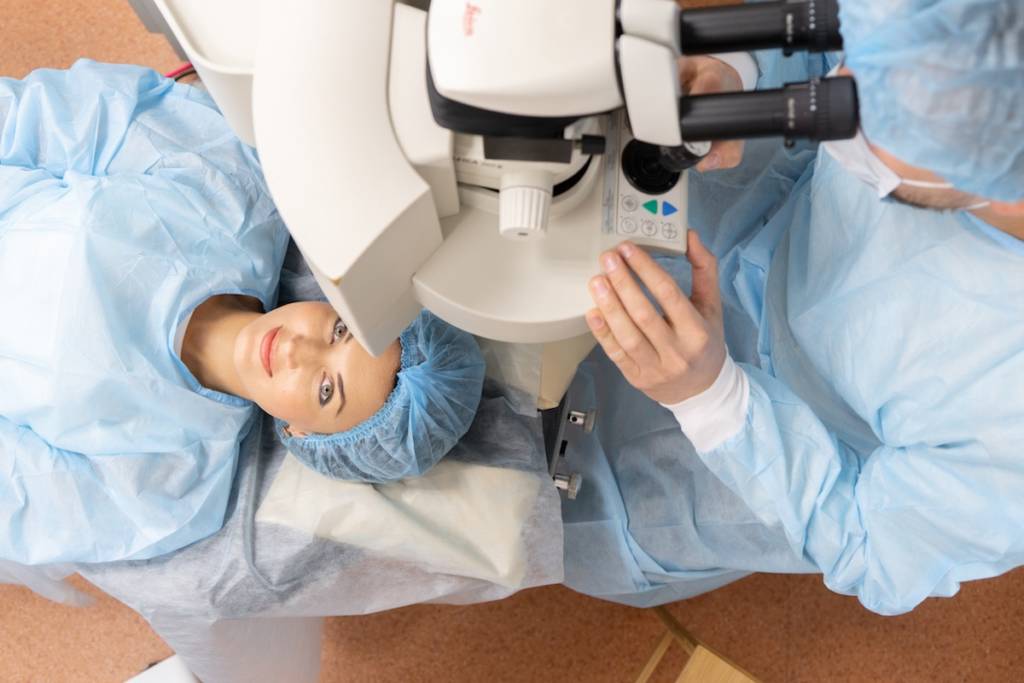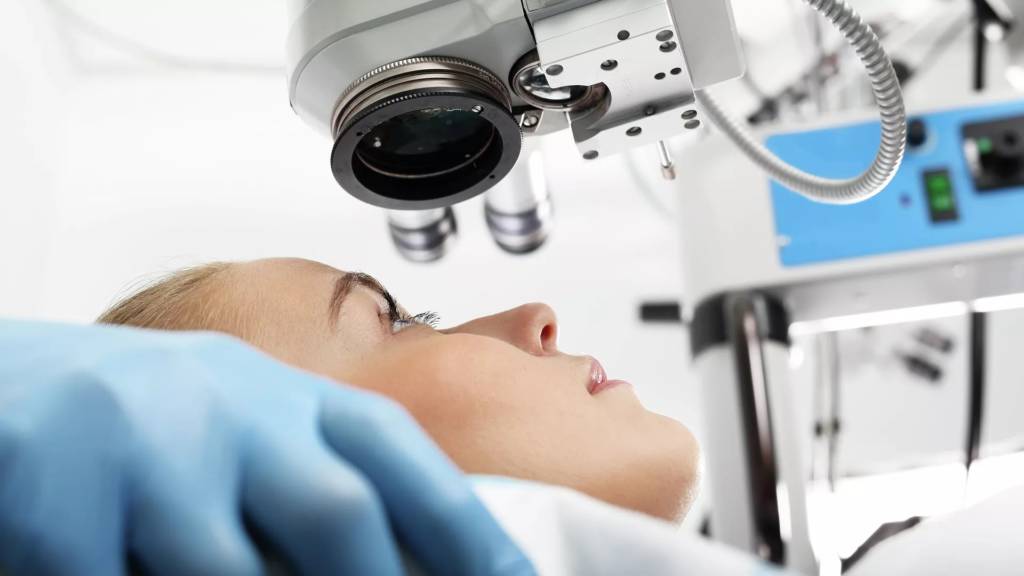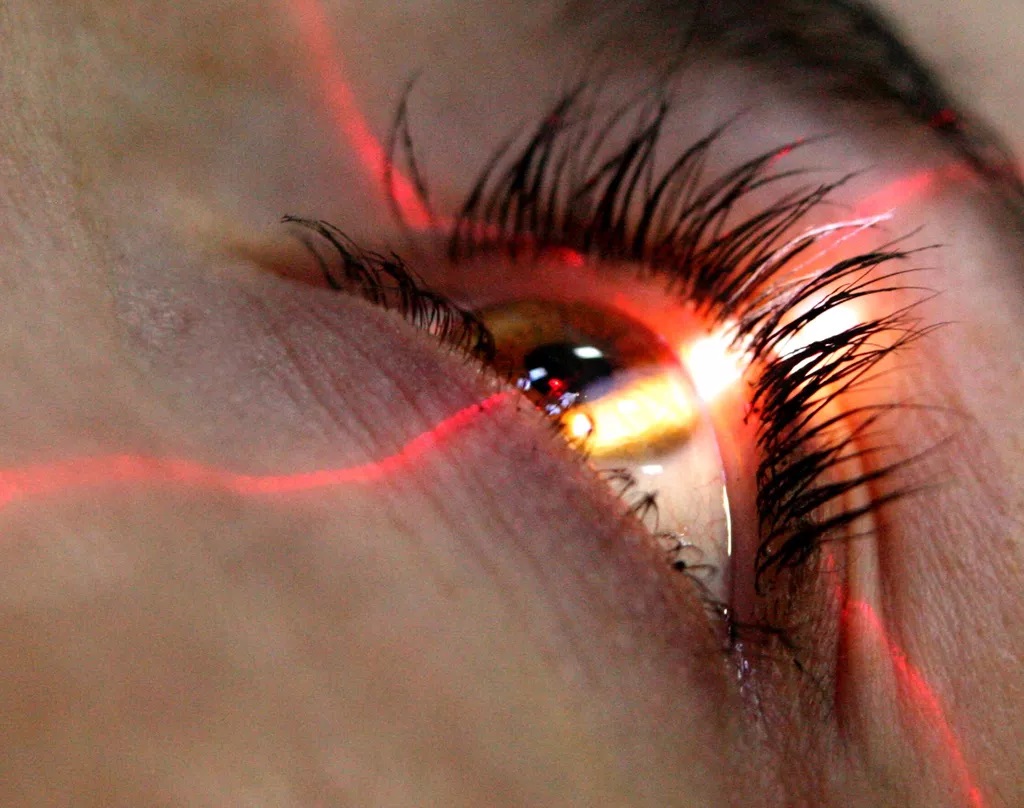The laser vision correction technique LASIK appeared in 1989. Today it is the most popular all over the world. Medical centers and clinics in 45 countries operate using the LASIK method. Over the past ten years, more than 15 million corrections have been performed worldwide.
LASIK is a combination of microsurgical treatment and excimer laser technology.
During laser correction, a special device is used – a microkeratome, which first creates a flap of corneal tissue, which is folded back, and the laser effect is already applied to the inner layers of the cornea.
After laser correction, vision improves due to the fact that the laser creates a new shape of the cornea – the “natural lens” of our eye, as a result of which it begins to refract light rays in a different way, they are focused on the retina and the image becomes clear.
During the excimer laser correction according to the LASIK method, the upper layers of the cornea are not affected, and the optically distorted areas are evaporated by the laser beam from the middle layers of the corneal tissue. As a result of such exposure, the shape of the cornea acquires optical parameters that are individual for each patient. This avoids postoperative clouding of the cornea and a painful rehabilitation period. Vision is restored in the shortest possible time.
Limits of application of laser vision correction using the LASIK method:
- Myopia (.short-sightedness) up to −15.0D
(the doctor focuses on the individual characteristics of the eye); - Hyperopia. ( long-sightedness) +6.0D;
- Astigmatism ± 3.0D.
Individual Approach:
The modern LASIK technique (LASIK) implies an individual approach to the treatment of diseases of the organs of vision. Before direct vision correction with a laser beam, doctors conduct a thorough examination, which allows to identify the degree of the disease. All data obtained as a result of diagnostics are entered into a computer, which calculates the parameters of laser exposure to the inner layers of the cornea of the eye. This allows you to achieve maximum accuracy of vision correction.
Stages of laser vision correction using the LASIK method:
• Anesthetic drops are instilled into the patient’s eye (anesthesia or anesthetic injections are not used). After the anesthesia has worked, a an eyelid speculum is used. It keeps the eyelids from involuntary blinking.
• The patient is asked to look at a luminous dot in the device to center the position of the eye.
• A special device – a microkeratome – creates a flap from the surface layers of the corneal tissue with a thickness of 130-150 microns, and then folds back, opening up access to the deeper layers of the cornea for the laser beam.
• The laser beam vaporizes part of the cornea, forming its new surface.
• The flap is returned to its place and fixed by collagen – the cornea’s own substance.
• No sutures are required. Restoration of the epithelium along the edge of the flap occurs independently.
• After the laser correction is completed, the cornea is washed with a special solution. The patient is given anti-inflammatory drops.
• Then the correction is made in the same way on the second eye.

The rehabilitation period after laser correction according to the LASIK method is minimal: the patient begins to see well already 1-2 hours after the correction, but slight fluctuations in vision may continue for some time.
These fluctuations do not interfere with the usual way of life. The patient quickly returns to his usual rhythm. Vision is finally restored within 3-5 days, depending on the individual characteristics of the eye. Doctors warn patients about possible discomfort after laser correction, but in most cases this is only a minor discomfort.
For many years now, the LASIK technique has allowed people to look at the world not through glasses, but with their own completely healthy eyes. Reading books, driving a car and many other daily activities will never require optical vision correction (contact lenses, glasses).
LASIK is the highest quality, reliable, effective and safe method of restoring vision today.
Advantages of LASIK Laser Correction:
• The LASIK technique allows you to quickly restore vision (in just 40 seconds). The rehabilitation period does not exceed 2 hours, and after this time a person can do their usual activities, but without glasses or contact lenses.
• The operation is tolerated by the patient painlessly, the effect of the laser on the eye is practically not felt.
• Laser correction is recognized as one of the safest ways to treat farsightedness, myopia and astigmatism. The operation of the laser is controlled by a computer program, where all the data of preliminary examinations are entered.
• The LASIK technique is characterized by stable results. More than one and a half thousand people annually improve the quality of vision with the help of laser treatment.
• Thanks to the high-tech LASIK technique, it became possible to treat both eyes during the operation, while with other methods of vision correction, the operation is first performed on one, and after 1 or 2 days – on the second eyeball.

Benefits of choosing AstraMedicaGroup
Only top qualified doctors
JCI certificated hospitals
Free COVID-19 Test before departure
4 nights in a 5-star hotel in Istanbul
Costs for laboratory, medication and equipment
Pre/post-operative tests
Free Istanbul tours
Latest technologies
Excelent travel assistance
All-round VIP transfer
Credit / Debit cards accepted
No prepayment
Personal assistants speak in English
24/7 customer service
